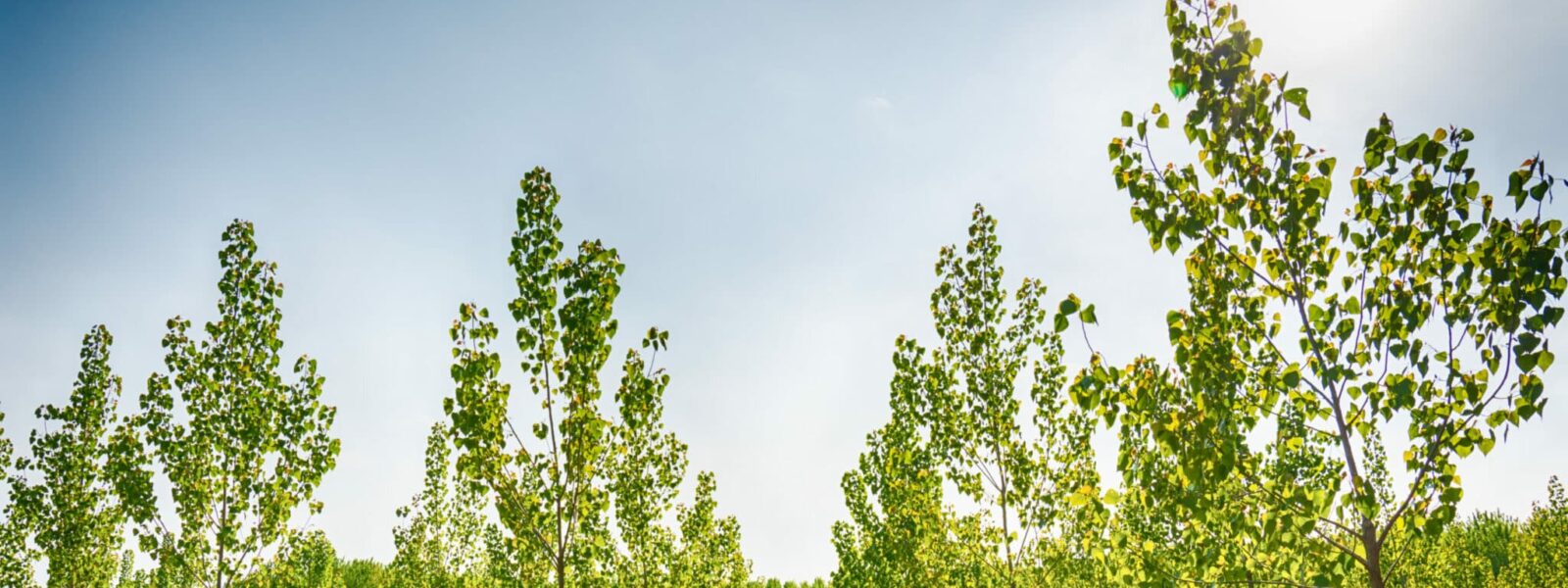“Benefits of planting trees are grossly overestimated”
Early in 2019, a scientific paper entitled “The global tree restoration potential” was published by Bastin et al. 1 in the prestigious journal Science, immediately making waves around the world. In it, the authors present an argument that massive tree-planting across the globe could be enough to mitigate climate change much more than had previously been assumed. They concluded that planting an extra 0.9 billion hectares of trees would store 205 billion tonnes of carbon – thus, claiming that global tree restoration is “our most effective climate change solution to date”.
As such, the study promised to offer hope of an actionable and reliable solution to reduce atmospheric CO2 levels. By the end of the year, it became the second most cited climate change paper in the press, generating nearly 600 media articles. Nevertheless, this striking claim has since provoked massive pushback from scientists, including five technical comments2 in response stating that the study greatly overestimated the mitigation potential of mass tree-planting. We talked to two experts representing the natural and social science perspectives to understand why this topic is so critical for net zero commitments, for policy and for the scientific community.
Much can be said around the scientific controversy that the 2019 paper generated. Why are we still interested in this, two years on?
Julia Pongratz. The researchers in the study used a large amount of photo interpretation measurements and combined those with information on climate and soils to calculate global tree cover potential. Such high-resolution estimates of potential tree cover are much needed, in fields such as climate research to assess how much vegetation exists in the absence of human interference. In this respect, the study is a laudable achievement. Based on this new estimate the authors went on to draw conclusions concerning how much carbon could be taken up if the tree cover were restored everywhere [apart from present-day croplands]. In comparison to previous estimates, the paper was at the very high end of the scale for CO2 reduction potential. Most of the following technical comments criticised this point, claiming that Bastin et al. drastically overestimated the environmental benefits of tree-planting.
Stephen Woroniecki. Scientists are worried that we will continue to dramatically overestimate how much carbon can be drawn down by terrestrial ecosystems. And that, as a result, the global economy will continue to pump out greenhouse gases only to realise further down the line that the carbon sink created by trees is less effective than we thought – or that it is more vulnerable to climate change itself. Despite warnings, planting trees are forming a central part of many policy proposals. So, even though many scientists pushed back on the original paper, their concerns had impact on policy or public debate. Planting trees or letting them grow back naturally is an important part of the climate challenge, but it is not a silver bullet, and cannot compensate for emissions elsewhere in the economy.
There also seems to be some confusion about the different terminology being used, namely the difference between reforestation and afforestation. Could you explain?
SW. Afforestation is planting trees where they have not previously grown – or in any recent time significant to us, at least. This includes tree-planting in grassland or other ecosystem types which historically have had few trees. Whereas reforestation is replanting trees where they previously grew. This includes parts of the Amazon basin, for example, where reforestation aims to re-establish pre-existing forests.
JP. Scientists are concerned that afforestation can damage ecosystems that are vital for both biodiversity and carbon sequestration. Planting trees on grasslands or draining peat lands to plant forest plantations could have negative consequences for the climate and for local fauna and flora. The estimates by Bastin et al. include using all current pastures and rangelands (grasslands, shrublands etc), which would require massive changes in our current agricultural management and/or diets.
Scientists fear that afforestation will damage ecosystems essential for biodiversity.
There were five technical comments in total. Can you talk about the scientific backlash?
JP. A key criticism of the original manuscript was that it seemed that zero carbon was assumed for the existing ecosystems, which clearly would be a flawed assumption; even if grasslands do not have a lot of biomass, soil carbon stocks are substantial. As a result, the method section was changed to create very similar numbers to the original while now accounting for carbon in the pre-existing ecosystems. This is an unsatisfying result for the process of scientific publishing, given that with such a major methodological change the study should have gone through formal peer-review again, which it did not.
I think harm has been done to the trust in science. In Germany, one of the largest newspapers reported on a full page about this new panacea against climate change, only to acknowledge the very next day that exactly those statements of the study were heavily criticised by other renowned researchers. This suggested to the public that there was a dispute in the scientific community that does not really exist. The statement about reforestation/afforestation being “our most effective climate solution to date” was subsequently removed from the paper because it is not true – obviously, reducing anthropogenic emissions from fossil fuels and carbonates as well as from land use are the solutions. But the damage in public perception of research in this field had already been done.
Are there other important concerns?
SW. Yes, there are two additional issues to consider when planting trees as a carbon solution. One concerns biodiversity like: what effects will there be on biodiversity of large-scale tree planting? And the other is social: how will these projects affect people who live in the area? The IPCC special report on climate change and land3 is an excellent resource on these negative consequences. It also provides analysis of reforestation showing that negative food security effects are likely to be less pronounced for reforestation than afforestation. A lot depends on which trees are planted, where, why, and do they provide for local needs. There are some terrible examples of cutting down primary forests only to plant trees to claim the carbon benefit.
It also troubles me that landscapes can be seen as these empty spaces that are ripe for restoration. When you make a map of restoration potential, and you don’t take people who live there into account you run the risk of walking over peoples’ rights – especially in countries with poor governance and systematic neglect of human rights. The changes of restoration or afforestation contributing to positive development outcomes in those places is much lower.
JP. We must not also forget that when we talk about climate impact of growing trees, more than CO2 matters. We also need to consider what we call bio-geophysical effects such as changes in energy and water fluxes. If you plant a forest, you may easily change local temperatures by several degrees, depending on the region. We are on the way to understanding which forests create an additional cooling effect, which ones may lead to additional warming if it is possible to mitigate heat extremes or drought conditions. Ideally, we would create win-win situations of mitigation of with adaptation to climate change when the planted forest counteracts the effect of global warming locally.
Some say that the part of the issue is trying to manage tree-planting at the global scale. Is local management a better way?
SW. In the research community there is debate between those who favour a community-based approach, and those who favour projects at larger scale, focused on global targets where the community may be an afterthought. Finding a balance between the two is why some organisations like IUCN and Oxford University’s Nature-based Solutions Initiative have developed guidelines for nature-based solutions to build the guardrails for large-scale implementation of tree planting. Involving people from the beginning, listening to their histories and priorities, can get you so much further than marching in and fencing off a new plantation.
JP. All land-based carbon dioxide removal methods are implemented locally. It is great if establishing new forest cover sucks up CO2, but if it is cut down five years later because local farmers have no other option than move into this land, little has been gained. To assess social acceptability of measures like afforestation it is important to bring in directly the stakeholders on the ground. We are thus now moving towards a more interdisciplinary approach as well, where the natural scientists and economists that have always been interested in forests’ interactions with climate change collaborate intensively with the social sciences and humanities.
















